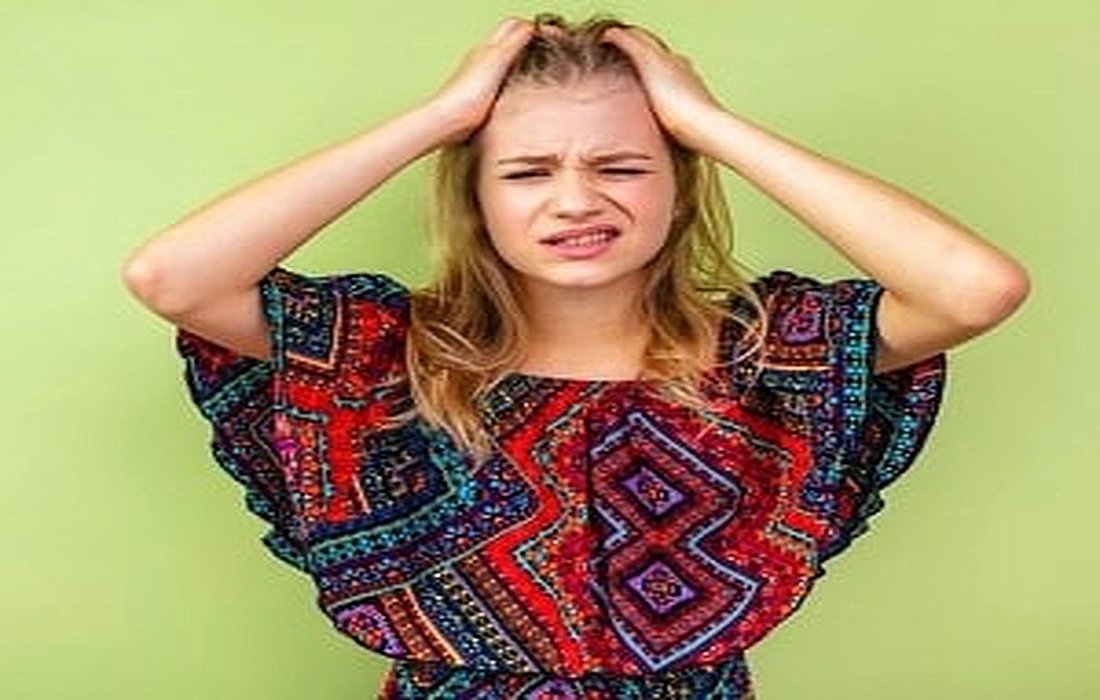AboutScalp PainLearn more about scalp and hair root pain
The scalp protects your head, while the hair retains heat in this area. However, all follicles on the scalp are prone to infections and other issues that may cause pain. Some individuals might even experience pain in the scalp when moving their hair. In other cases, this pain can be persistent.
There are many treatments for scalp pain, but they vary depending on the cause. Sometimes home remedies are effective, but in more serious cases, seeing a doctor is necessary. If you feel pain when touching or moving your hair, the issue lies with your scalp and hair roots; in this section on health and wellnessSelMagzwe explore the reasons and treatment methods related to scalp pain when moving hair, so stay with us.
Causes of Scalp Pain When Moving Hair
Scalp pain is common; the reasons for pain when moving hair depend onhairstyleto health conditions. Even just combing hair can cause scalp pain. Some conditions that may lead to this problem include:
– Traction Alopecia
Traction alopecia is a type ofhair lossthat occurs due to tightly tying the hair at the back of the head. For example, people who braid or tie their hair into a ponytail are at higher risk for traction alopecia. Traction alopecia can lead to sensitivity anditching of the scalpas well.
– Scalp Psoriasis
Psoriasis is an autoimmune disease that causes the growth of new skin cells without the old cells shedding. New cells accumulate on the skin, forming patches. These patches can occur anywhere on the body. According to reports from the American Academy, they managed to improve the scalp condition of 50 percent of individuals withpsoriasison the scalp.
Psoriasis leads to the formation of scaly patches on the scalp. These patches are itchy and may even become sores. Scratching these patches can worsen the condition and lead to bleeding or hair loss.
– Seborrheic Dermatitis
Seborrheic dermatitis is a type of eczema that typically occurs in oily areas ofskinThe scalp is oily due to the presence of hair follicles, making it vulnerable to seborrheic dermatitis. This condition is more common in adults aged 30-60.
– Folliculitis
Folliculitis typically occurs due to bacteria, yeast, or dust mites. Folliculitis refers to inflammation or infection of the hair follicles. This condition causes small, itchy, discolored bumps on the skin, which may be flaky and painful.
– Allodynia
Allodynia is a condition that causes abnormal pain responses, such as discomfort when moving hair. Some health conditions such as fibromyalgia, trigeminal neuralgia, anddiabetic neuropathycan also trigger allodynia.
Other Factors
Some other possible reasons for scalp pain when moving hair include:
- Reactions to shampoos, conditioners, or other hair products
- Heat
- Hair styling tools like hairbrushes
- Stress
Symptoms of Scalp Issues
Generally, the symptoms of scalp problems include:
- Itching
- Pain
- Burning sensation
- Ticklish feeling
- Pain
- Skin tingling
Some conditions causing scalp pain can also lead to other symptoms, including:
- Patchy hair loss
- Discolored patches
- Flaking skin
- Oily, white, or yellow scales on the scalp
- Small, itchy bumps
Treatment Options for Scalp Discomfort
The key factor in reducing scalp discomfort is identifying the underlying cause.
When a specific hairstyle causes discomfort, the first step is to change the hairstyle. For example, you can loosen tight hairstyles (like ponytails orbraidsthat are tight).
If an individual has scalp psoriasis, the treatment options mentioned below may be beneficial:
- Using topical lotions
- Using medicated shampoos
- Using scalp conditioners
- Taking biologic medications
For seborrheic dermatitis, treatment may include:
- Using over-the-counter anti-dandruff shampoos
- Using prescribed antifungal creams or shampoos
- Gently cleansing the affected area with a product containing2 percent zincMoisturizing the scalp
- Possible treatments for scalp folliculitis include:
Frequent washing with regular or antifungal shampoos
- Using
- topical antibiotics or steroidsTaking antihistaminesTaking acne medications
- Lifestyle changes can also help improve scalp pain. For example, maintaining a balanced diet, exercising regularly, and getting enough sleep are all good options.
- When to See a Doctor?
For many people, changing hair products or their hair routines can help reduce scalp discomfort. Using over-the-counter products may also be beneficial for scalp pain when moving hair. However, if improvements are not seen after a few weeks of these treatments, it’s important to see a doctor.
Hair loss can indicate an underlying condition such as traction alopecia or scalp psoriasis. You can also consult a doctor to identify the cause and find suitable treatment.
Other Notes About Scalp Pain When Moving Hair
– There are reasons for scalp pain when moving hair. Finding the most effective treatment method depends on the cause of discomfort.
– Conditions like psoriasis can cause scalp pain. These conditions usually require medical treatment.
– In other cases, some hairstyles can lead to such problems, which can be adjusted at home.
– Individuals with sensitive scalps should carefully monitor their condition and their
hair care
routines.– If home treatments are ineffective, a doctor can identify the cause and suggest possible treatments.* We will discuss herbal and traditional medicine treatments in the next article.*
Causes of Scalp Pain
Scalp Pain







